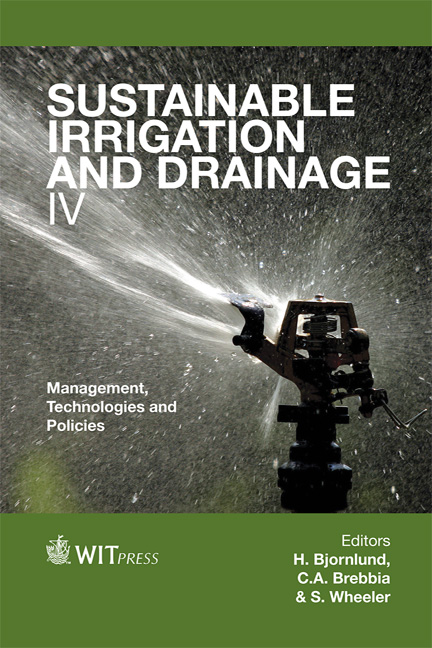Planning Of Sustainable Agricultural Groundwater Development In Canal Areas
Price
Free (open access)
Transaction
Volume
168
Pages
12
Page Range
159 - 170
Published
2012
Size
457 kb
Paper DOI
10.2495/SI120141
Copyright
WIT Press
Author(s)
D. Kashyap & S. Ghosh
Abstract
Groundwater development in canal areas, apart from providing subsurface drainage, helps in enhancing the crop areas since the canal supplies are rarely adequate to meet the complete irrigation demands. Sustainability of this crop area enhancement and the associated groundwater development is linked to the requirement of restricting the resulting state variables viz. long-term water table depths and the stream-aquifer interflows within prescribed limits. In the present study, a simulation model is proposed to address this planning problem. The model accepts the crop areas and several other features of the hydro-agronomic system as inputs and computes the maximum water table depth and the streamaquifer interflows at critical times at the dynamic equilibrium. Under the dynamic equilibrium the excess of annual withdrawals over the annual vertical recharge is compensated by lateral inflows from hydraulically connected drains. As such the total annual inflow and outflow balance each other and the annual time series of head becomes stationary. Therefore dynamic equilibrium represents the annual scenario corresponding to an indefinite sustenance of the cropping/pumping pattern. The proposed strategy is illustrated by applying it to the command of Eastern Yamuna canal system (India) that is experiencing a severe water deficit. Simulation runs are conducted for three cropping patterns representing current scenario, ambitious and conservative patterns. Keywords: groundwater, irrigation, sustainable.
Keywords
groundwater, irrigation, sustainable.





